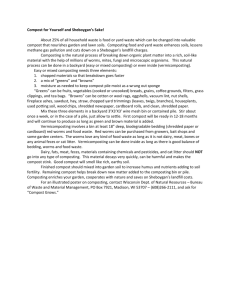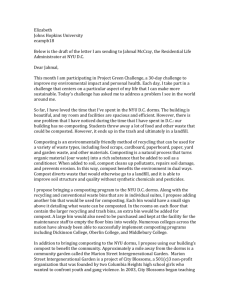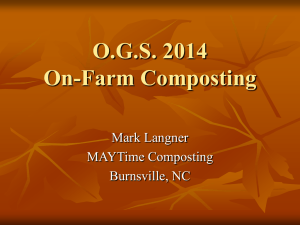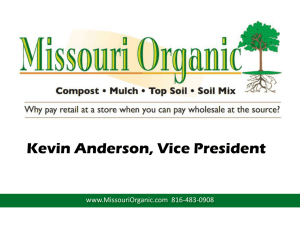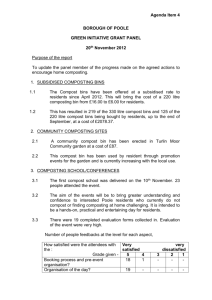Composting - Part 3
advertisement
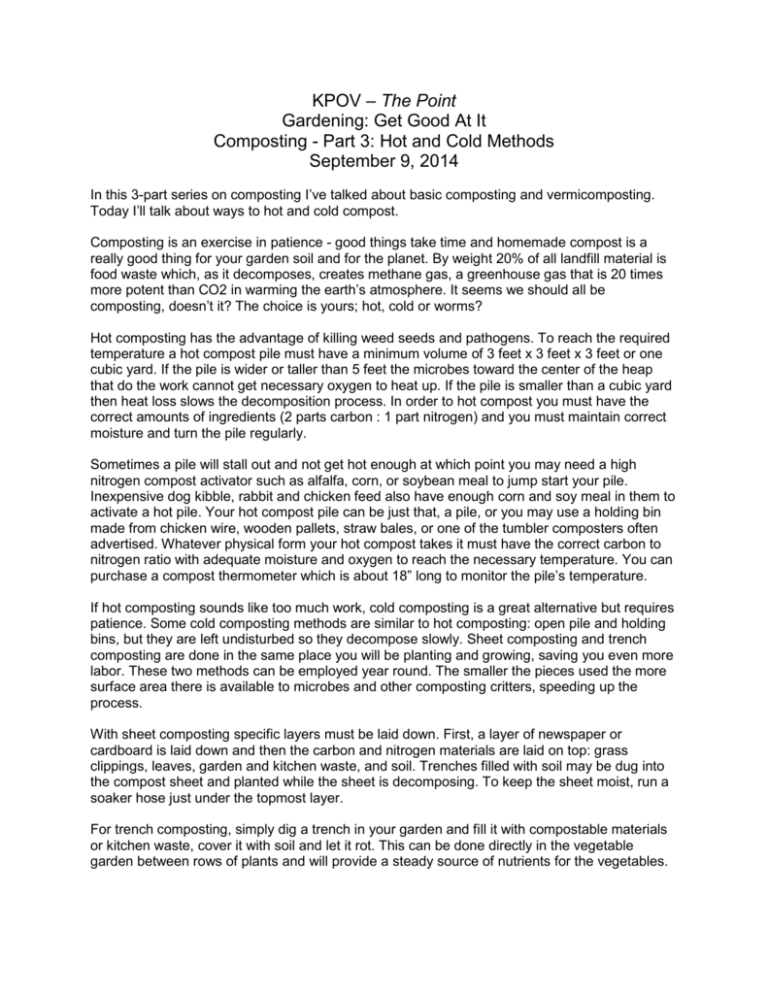
KPOV – The Point Gardening: Get Good At It Composting - Part 3: Hot and Cold Methods September 9, 2014 In this 3-part series on composting Iʼve talked about basic composting and vermicomposting. Today Iʼll talk about ways to hot and cold compost. Composting is an exercise in patience - good things take time and homemade compost is a really good thing for your garden soil and for the planet. By weight 20% of all landfill material is food waste which, as it decomposes, creates methane gas, a greenhouse gas that is 20 times more potent than CO2 in warming the earthʼs atmosphere. It seems we should all be composting, doesnʼt it? The choice is yours; hot, cold or worms? Hot composting has the advantage of killing weed seeds and pathogens. To reach the required temperature a hot compost pile must have a minimum volume of 3 feet x 3 feet x 3 feet or one cubic yard. If the pile is wider or taller than 5 feet the microbes toward the center of the heap that do the work cannot get necessary oxygen to heat up. If the pile is smaller than a cubic yard then heat loss slows the decomposition process. In order to hot compost you must have the correct amounts of ingredients (2 parts carbon : 1 part nitrogen) and you must maintain correct moisture and turn the pile regularly. Sometimes a pile will stall out and not get hot enough at which point you may need a high nitrogen compost activator such as alfalfa, corn, or soybean meal to jump start your pile. Inexpensive dog kibble, rabbit and chicken feed also have enough corn and soy meal in them to activate a hot pile. Your hot compost pile can be just that, a pile, or you may use a holding bin made from chicken wire, wooden pallets, straw bales, or one of the tumbler composters often advertised. Whatever physical form your hot compost takes it must have the correct carbon to nitrogen ratio with adequate moisture and oxygen to reach the necessary temperature. You can purchase a compost thermometer which is about 18” long to monitor the pileʼs temperature. If hot composting sounds like too much work, cold composting is a great alternative but requires patience. Some cold composting methods are similar to hot composting: open pile and holding bins, but they are left undisturbed so they decompose slowly. Sheet composting and trench composting are done in the same place you will be planting and growing, saving you even more labor. These two methods can be employed year round. The smaller the pieces used the more surface area there is available to microbes and other composting critters, speeding up the process. With sheet composting specific layers must be laid down. First, a layer of newspaper or cardboard is laid down and then the carbon and nitrogen materials are laid on top: grass clippings, leaves, garden and kitchen waste, and soil. Trenches filled with soil may be dug into the compost sheet and planted while the sheet is decomposing. To keep the sheet moist, run a soaker hose just under the topmost layer. For trench composting, simply dig a trench in your garden and fill it with compostable materials or kitchen waste, cover it with soil and let it rot. This can be done directly in the vegetable garden between rows of plants and will provide a steady source of nutrients for the vegetables. I have barely scratched the surface of the body of knowledge concerning composting in this 3part series but I hope it is enough to entice you to join the growing ranks of backyard composters out there. Composting is an important way to improve the health of our soil and our air. So help the earth and give composting a try - hot, cold or with worms - itʼs a winning proposition for everyone! If you would like to learn more about composting and other gardening topics please visit our website, gocomga.com and click on the KPOV tab on the orange bar or call the OSU Extension Plant Clinic at 541-548-6088. This has been Gardening: Get Good At It. Thanks for tuning in!



